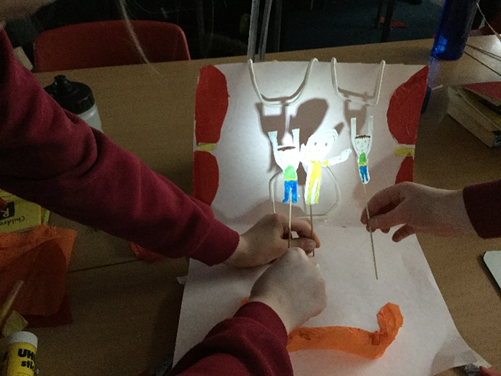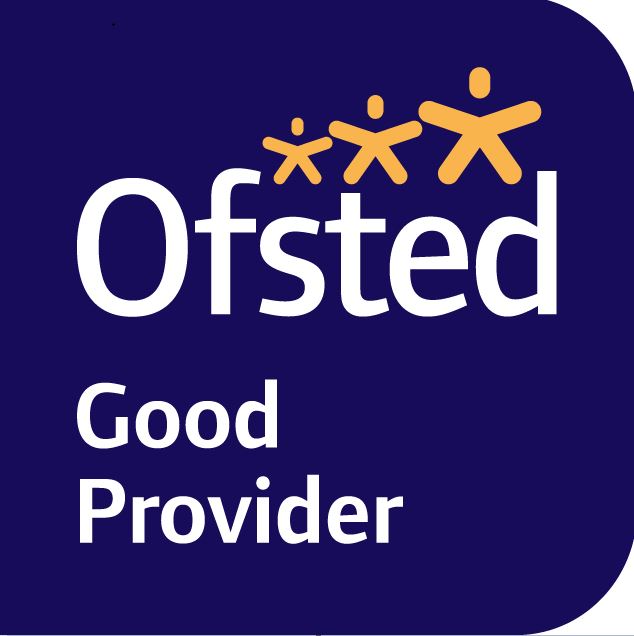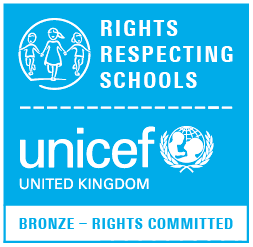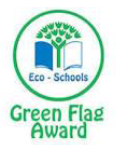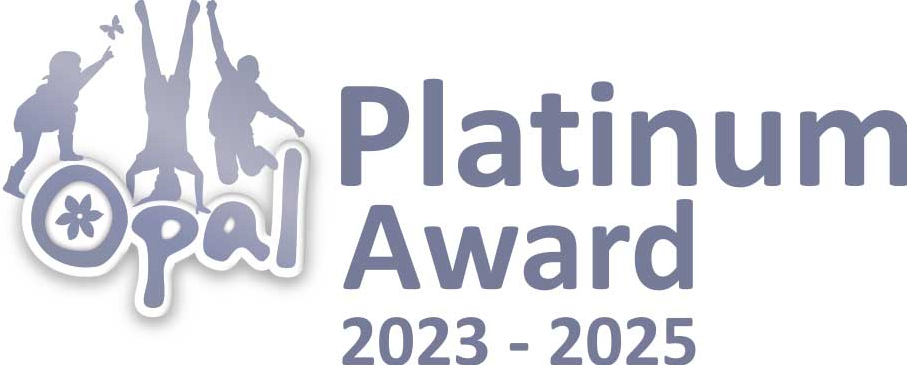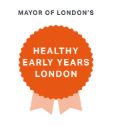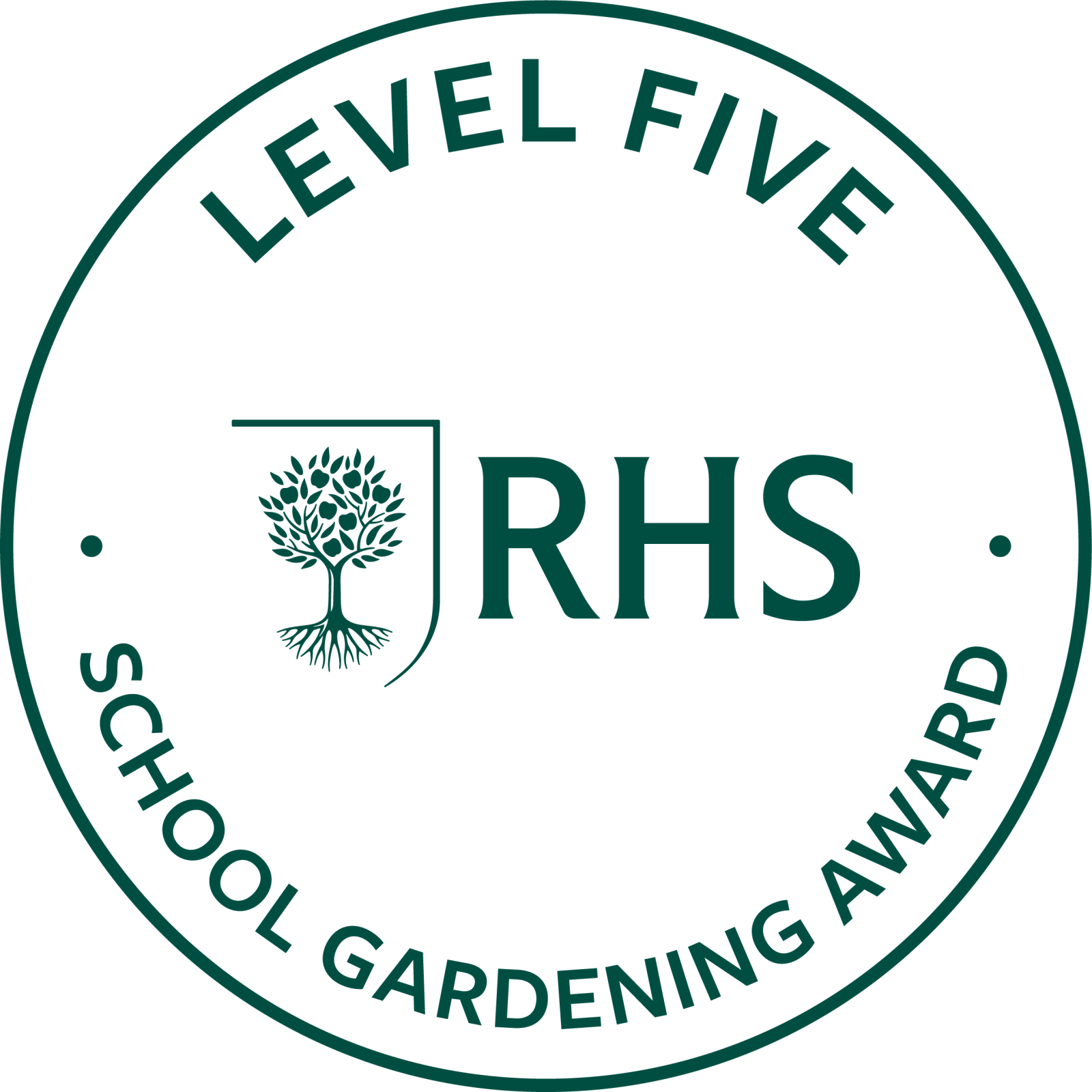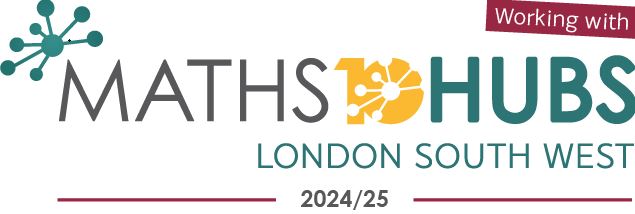Science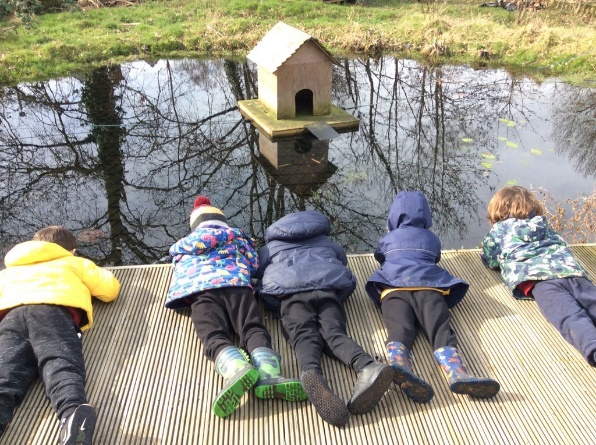
Our Vision for Science
Our Science Vision at St. Matthew’s is to “ensure our school community are given opportunities and encouraged to be curious and inquisitive and to question and explore the world in which we live.”
Our Science Curriculum
Science is a practical subject which stimulates the children’s curiosity about the world around them. We use first-hand experiences and investigations to explore, discover and gain scientific knowledge. Children are encouraged to investigate problems by ‘working scientifically’; using a variety of approaches to answer relevant scientific questions. These types of scientific enquiry include: observing over time; pattern seeking; identifying, classifying and grouping; comparative and fair testing (controlled investigations); and researching using secondary sources. Pupils should seek answers to questions through collecting, analysing and presenting data. The national curriculum for science reflects the importance of spoken language in pupils’ development across the whole curriculum – cognitively, socially and linguistically. The quality and variety of language that pupils hear and speak are key factors in developing their scientific vocabulary and articulating scientific concepts clearly and precisely.
In 2021, we were delighted to have obtained the Gilt Primary Science Quality Mark, which recognises that our school values the importance of science and delivers the subject in a challenging, stimulating and relevant way. Our main aim is to allow children to have opportunities to be scientists by testing and planning their own investigations. Each class have ‘wonder walls’ in their classrooms to help ignite curiosity as well as taking part in whole school investigations to see the progress in the working scientifically skills. We will continue to raise our science capital by creating more opportunities for science at home through termly challenges and take home science bags.
Principles of Science at St Matthew’s
Be Curious
Enthusiasm and curiosity for science is promoted at every opportunity.
Be Creative
Our lessons are practical, engaging and led by the children’s scientific thinking. We endeavour to use art and design to help plan and present our scientific enquiries.
Be Challenged
We encourage discussions, reasoning and deeper thinking of scientific concepts.
Be Collaborative
Our pupils are encouraged to work with one another to further develop their scientific skills and understanding through practical activities and discussions. We also work closely with local Secondary Schools and invite real scientists to inspire the next generation and raise aspirations for future careers in STEAM subjects.
Science Capital
We value the importance of enhancing our Science capital therefore our school community enjoy taking part in our own STEM/Science week every year. We enjoy having visits from parents who come in to talk about their science career all to try and raise our science capital to broaden our understanding of science.
Wonder walls and Science at Home
Each class have ‘wonder walls’ in their classrooms to help ignite curiosity as well as taking part in whole school investigations to see the progress in the working scientifically skills. We will continue to raise our science capital by creating more opportunities for science at home through termly challenges and take home science bags.
EYFS
In Reception the most relevant EYFS outcomes for Science are taken from ‘Communication and Language’ and ‘Understanding the World’.
ELG The Natural World
Children at the expected level of development will:
- Explore the natural world around them, making observations and drawing pictures of animals and plants.
- Know some similarities and differences between the natural world around them and contrasting environments, drawing on their experiences and what has been read in class.
- Understand the effect of the changing seasons on the natural world around them
The Reception children at St Matthew’s have access to many child led play opportunities which ignite their natural curiosities and wonders about their immediate surroundings. We take pride in this at St Matthew’s where we value the importance of play and use these experiences as learning opportunities for the children.
Our ‘Seasonal Change’ topic entwines our curriculum throughout the year. The children visit our onsite meadow for forest school type activities every week. Here, come rain or shine, they are able to make first hand observations as the seasons change. They think carefully about the clothing we wear to best suit the weather. They enjoy seeing the leaves change colour and making wonderful leaf rubbings using the fallen leaves. Spring arrives and they notice the birds tweeting, and the buds appearing on what were bare branches. They enjoy pond dipping and finding lots of creatures with every dip. They enjoy finding frog spawn and seeing the tadpoles develop into frogs, we have even had a few surprise visits from tiny froglets in our outdoor area. The children love going on minibeast hunts and talking about what they found. We enjoy planting in the summer term and learning about how to care for our plants.
Through our Power of Reading texts we learn about different animals and their habitats, we make small worlds for them and make books about their needs. We learn about the main parts of our bodies and use our 5 senses to help us describe.
In our day to day provision we have water trays where we explore floating and sinking, cars and ramps which helps us explore friction and have access to a range of science equipment such as magnifying glasses and magnets which always encourage us to explore.
Key Vocabulary
Seasons, weather, autumn, winter, spring, summer, ice, melt, plants, leaves, stem, flower, growing, animal, land animal, sea animal, farm animal, young, sink, ice, magnetic, life cycle, change, recycling, magnetic, space, planets.
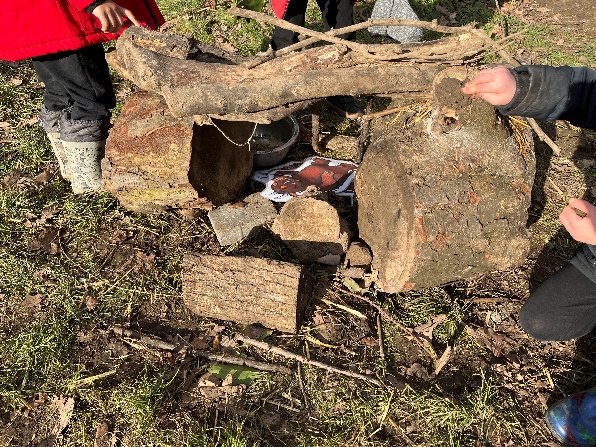
KS1
Seasonal change continues to be covered in throughout the year. The children notice changes in sunlight hours as well as how the weather changes over the year. They’ll learn to identify deciduous and evergreen trees and name a variety of common wild and garden plants including the basic parts of a plant.
The children learn about animals and the many species there are including features to help identify them. They learn about the foods they like to eat, learning about herbivores, carnivores and omnivores. They learn to draw the basic parts of the human body and can share which part of the body is associated with each sense.
The children have the chance to explore and test a range of materials to find the best material to create an umbrella for their teddy.
Key Vocabulary
Seasonal Change
Weather, sunny, rainy, windy, snowy, seasons, winter, summer, spring, autumn, sun, sunrise, sunset, day length, shorter, longer
Everyday Materials – What is the best material for an umbrella?
Object, material, wood, plastic, glass, metal, water, rock, brick, paper, fabric, elastic, foil, card/cardboard, rubber, wool, clay, hard, soft, stretchy, stiff, bendy, floppy, waterproof, absorbent, breaks/tears, rough, smooth, shiny, dull, see-through, not see-through
Plants – What plants will I find in my garden?
Leaf, flower, blossom, petal, fruit, berry, root, seed, trunk, branch, stem, bark, stalk, bud, (local garden/wild plants and tree names)
Animals Including Humans – What are animals?
head, body, eyes, ears, mouth, teeth, tail, wing, claw, fin, scales, feathers, fur, beak, paws, hooves, touch, taste, smell, hear, fingers (skin), eyes, nose, ear, tongue, head, neck, arms, elbows, legs, knees, face, hair.
Year 2
In Year 2 the children enjoy investigating the strength of materials in order to fulfil the challenge of building a strong sturdy wall.
They learn about how animals are adapted to their habitats including what is essential for survival. The children learn about the importance of being healthy and why we should exercise. They further their learning about plants finding out how to take care of bulbs and seeds.
Key Vocabulary
Animals Including Humans – How do I move? How do I eat?
Offspring, reproduction, growth, child, young/old stages (examples - chick/hen, baby/child/adult, caterpillar/butterfly), exercise, heartbeat, breathing, hygiene, germs, disease, food types (examples – meat, fish, vegetables, bread, rice, pasta)
Materials – What is the best material to build a strong wall?
Names of materials – wood, metal, plastic, glass, brick, rock, paper, cardboard
Properties of materials – as for Year 1 plus opaque, transparent and translucent, reflective, non-reflective, flexible, rigid
Shape, push/pushing, pull/puling, twist/twisting, squash/squashing, bend/bending, stretch/stretching
Plants – How do I look after seeds and bulbs?
Year 1 Leaf, flower, blossom, petal, fruit, berry, root, seed, trunk, branch, stem, bark, stalk, bud, (local garden/wild plants and tree names) Year 2 light, shade, sun, warm, cool, water, grow, healthy
Living Things and their Habitats – Where do animals like to live?
Living, dead, never been alive, suited, suitable, basic needs, food, food chain, shelter, move, feed, names of local habitats e.g. ponds, woodland, meadow, names of micro habitats e.g. under logs, in bushes etc.
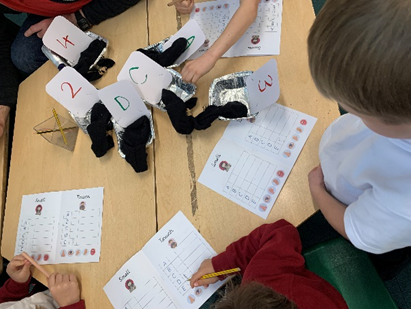
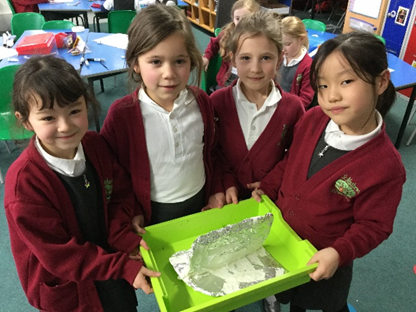
Lower KS2
Year 3
In Year 3 the children will be recalling knowledge learnt from Year 1 and 2 to further their understanding. The children learn about nutrition and the importance of eating a balanced diet. They learn about our muscles and bones. The children learn about the different types of rocks and how they are formed, they read a lovely book called ‘The Pebble in my Pocket’ by Meredith Hooper. The children enjoy learning about shadows and light. They extend their learning about plants by learning about how plants make their food to help them grow.
Key vocabulary
Animals Including Humans - What are food groups? Why do I have bones and muscles?
Nutrition, nutrients, carbohydrates, sugars, protein, vitamins, minerals, fibre, fat, water, skeleton, bones, muscles, support, protect, move, skull, ribs, spine, muscles, joints
Rocks – What are rocks?
Rock, stone, pebble, boulder, grain, crystals, layers, hard, soft, texture, absorb water, soil, fossil, marble, chalk, granite, sandstone, slate, soil, peat, sandy/chalk/clay soil
Light – What is a shadow?
Light, light source, dark, absence of light, transparent, translucent, opaque, shiny, matt, surface, shadow, reflect, mirror, sunlight, dangerous
Forces and Magnets – Is everything magnetic?
Force, push, pull, twist, contact force, non-contact force, magnetic force, magnet, strength, bar magnet, ring magnet, button magnet, horseshoe magnet, attract, repel, magnetic material, metal, iron, steel, poles, north pole, south pole
Plants – Do plants get thirsty?
Photosynthesis, pollen, insect/wind pollination, seed formation, seed dispersal (wind dispersal, animal dispersal, water dispersal)
Year 4
Following on from learning about animals and their habitats in Year 2, the children learn how animals are classified and look further into their habitats and humans can make an impact on an animals environment.
They explore the body further by getting stuck in to learn about digestion and teeth.
They enjoy making circuits to develop an exciting fairground and torch.
They enjoy creating experiments to explore states of matter.
Key Vocabulary
Living things and their habitats – How are animals sorted?
Classification, classification keys, environment, habitat, human impact, positive, negative, migrate, hibernate
Animals including humans – Where does my food go? Do all animals have teeth?
Digestive system, digestion, mouth, teeth, saliva, oesophagus, stomach, small intestine, nutrients, large intestine, rectum, anus, teeth, incisor, canine, molar, premolars, herbivore, carnivore, omnivore, producer, predator, prey, food chain
Electricity – what is electricity?
Electricity, electrical appliance/device, mains, plug, electrical circuit, complete circuit, component, cell, battery, positive, negative, connect/connections, loose connection, short circuit, crocodile clip, bulb, switch, buzzer, motor, conductor, insulator, metal, non-metal, symbol
States of matter – What’s the matter?
Solid, liquid, gas, state change, melting, freezing, melting point, boiling point, evaporation, temperature, water cycle.
Upper KS2
Year 5
In Year 5 children learn about the Earth and Space which is always a favourite at St Matthew’s, they always enjoy their visiting the space dome. They extend their learning about life cycles of animals and plants. They learn about forces and how force is measured and will have opportunities to plan investigations to look at reversible and irreversible changes.
Key Vocabulary
Living Things and their Habitats – Are all babies born from an egg?
Life cycle, reproduce, sexual, sperm, fertilises, egg, live young, metamorphosis, asexual, plantlets, runners, bulbs, cuttings
Animals Including Humans – What happens when I get older?
foetus, embryo, womb, gestation, baby, toddler, teenager, elderly, growth, development, puberty
Properties of Materials – What happens when you heat something?
Thermal/electrical insulator/conductor, change of state, mixture, dissolve, solution, soluble, insoluble, filter, sieve, reversible/non-reversible change, burning, rusting, new material
Earth and Space – What planet is closest to Earth?
Earth, Sun, Moon, (Mercury, Jupiter, Saturn, Venus, Mars, Uranus, Neptune), spherical, solar system, rotates, star, orbit, planets, Northern Hemisphere, Southern Hemisphere
Forces – What slows me down?
Force, gravity, Earth, air resistance, water resistance, friction, mechanisms, simple machines, levers, pulleys, gears
Year 6
In Year 6 the children are consolidating their knowledge and the preparation begins for the transition to secondary school. The children should now have more confidence at forming further questions based on their investigations as well as have more freedom to plan their own investigations to find an answer to their own questions.
Key Vocabulary
Living Things and their Habitats – How do animals get their names?
Vertebrates, fish, amphibians, reptiles, birds, mammals, invertebrates, insects, spiders, snails, worms, flowering, non-flowering
Electricity – What makes a circuit complete?
Circuit, complete circuit, circuit diagram, circuit symbol, cell, battery, bulb, buzzer, motor, switch, voltage
Light – can you see round corners?
straight lines, light rays, opaque, translucent, transparent, shadow, pupil, iris, lens, eyelid, reflection, refraction, convex, concave, kaleidoscope, Periscope, Rainbow, Prism, Source
Animals Including Humans – what happens when I exercise?
Heart, pulse, rate, pumps, blood, blood vessels, transported, lungs, oxygen, carbon dioxide, nutrients, water, muscles, cycle, circulatory system, diet, exercise, drugs, lifestyle, carbon dioxide
Evolution and Inheritance – What was the first living thing?
Offspring, sexual reproduction, vary, characteristics, suited, adapted, environment, inherited, species, fossils, evolution, adapted, mutation, adapted
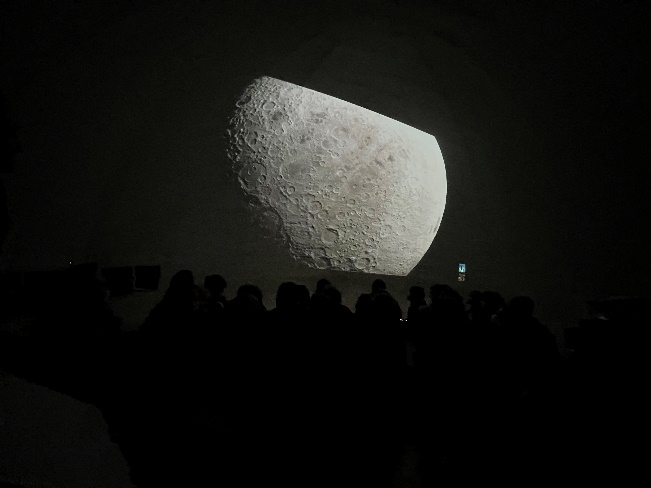
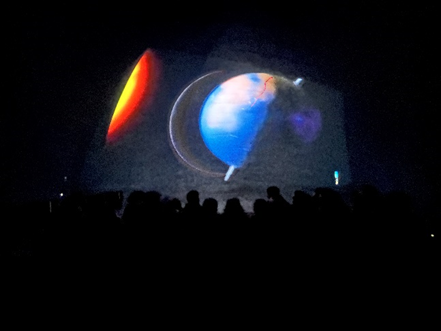
st ms vision and principles web.pdf
-
Science
download_for_offline
download_for_offlineScience
- SCIENCE LTP download_for_offline
download_for_offlineSCIENCE LTP
- Science-Week download_for_offline
download_for_offlineScience-Week
- St Ms Vision and Principles Web download_for_offline
download_for_offlineSt Ms Vision and Principles Web
- SCIENCE LTP download_for_offline



